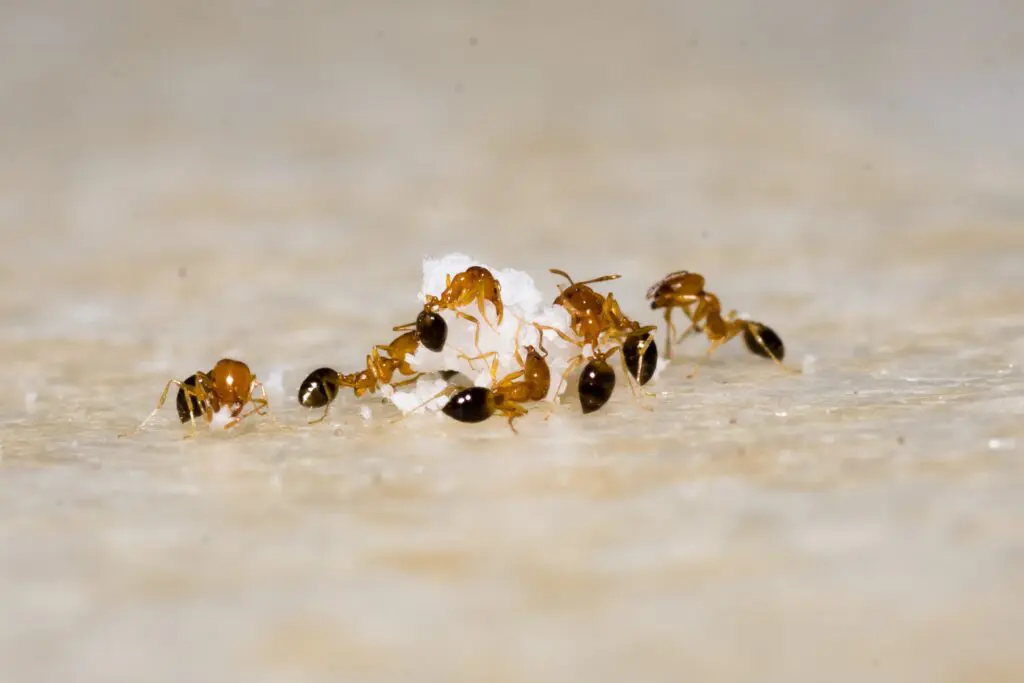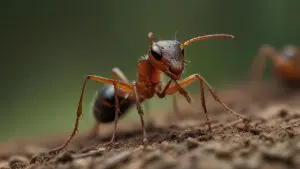

Florida's diverse ecosystem and subtropical climate foster a haven for an array of pests. From venomous snakes and disease-carrying mosquitoes to destructive termites and persistent cockroaches, the state contends with a range of troublesome invaders. This article delves into the most prevalent pests in Florida, highlighting their characteristics, potential dangers, and effective strategies for prevention and control. Read on to learn all you need to know about pests in The Sunshine State.

Ants
Ants are small insects with segmented bodies, six legs, and distinctive antennae. In Florida, some common ant species include fire ants, which are red-brown with a darker abdomen; carpenter ants, which are larger and black or red in color; and ghost ants, which are tiny and pale-colored. While most ants in Florida aren't inherently dangerous, fire ants can inflict painful stings, causing allergic reactions in some individuals. Carpenter ants may damage wooden structures, and some species can contaminate food. Ants can also transmit bacteria, posing health risks when invading homes and food sources. Proper pest control helps mitigate their presence and potential dangers.
Cockroaches
Cockroaches are oval-shaped insects with flat bodies, six legs, long antennae, and two prominent wings, though not all species fly. In Florida, the most common cockroach species include the American cockroach, which is reddish-brown with a yellowish margin; the German cockroach, which is smaller and light brown with two dark stripes; and the smokybrown cockroach, which is dark brown to mahogany. Cockroaches can pose health risks as carriers of bacteria and allergens, triggering asthma and allergic reactions. They contaminate food, cause foul odors, and spread a number of diseases and parasites. Their presence can indicate unsanitary conditions, though they will also infest clean areas. Efficient sanitation and professional pest control are vital for managing and preventing cockroach infestations.
Termites
Termites are small, pale insects with soft bodies, straight antennae, and a straight waist. In Florida, the most common termite species are subterranean termites, identified by their creamy-white bodies and darker heads. Drywood termites, with a light brown or cream-colored body, are also prevalent. Termites pose a significant threat by feeding on wood, causing structural damage to homes and buildings. Their ability to consume wood silently and rapidly makes them dangerous, potentially leading to costly repairs. Regular inspections, preventive measures like soil treatments, and swift professional intervention are crucial for termite control and protecting structures.
Rodents
Rodents are mammals characterized by sharp incisors for gnawing, small bodies covered in fur, and a long tail. In Florida, common rodent species include the roof rat, the Norway rat, and mice, which are notably smaller than rats. Rodents pose dangers by contaminating food, transmitting diseases such as Hantavirus and salmonellosis, and causing structural damage by gnawing on wires and insulation. Their rapid reproduction rates make infestations problematic. Effective sanitation, sealing entry points, and professional extermination help prevent and control rodent populations, averting health and property risks.
Spiders
Spiders have two body segments, eight legs, and fangs used to inject venom into prey. In Florida, common spider species include the black widow, which is black with a red hourglass on the abdomen; the brown recluse, which is light to dark brown with a violin-shaped mark; and orb-weaver spiders, which appear in various colors and weave intricate webs. While most spiders are not aggressive, black widows and brown recluses possess venom that can be harmful to humans, causing severe reactions and, in rare cases, requiring medical attention. Although most spiders in Florida are not dangerous, caution and professional removal may be necessary when dealing with venomous species.
Mosquitoes
Mosquitoes are small insects with slender bodies, long legs, wings, and a proboscis for feeding. In Florida, common mosquito species include the Aedes aegypti, which is dark with white markings, and Aedes albopictus, which is black with white stripes. Mosquitoes are dangerous, as they are carriers of diseases like West Nile virus, Zika virus, dengue fever, and Eastern equine encephalitis, transmitted through their bites. Their abundance in Florida's humid climate poses health risks, prompting the necessity for preventive measures such as eliminating standing water, using repellents, and wearing protective clothing to minimize exposure to mosquito-borne illnesses.
Ticks
Ticks are arachnids with oval bodies, eight legs, and no antennae. In Florida, common tick species include the lone star tick, which is reddish-brown with a white spot on females; the black-legged tick, also known as the deer tick, which is reddish-brown to black; and the American dog tick, which is brown with whitish markings. Ticks are vectors of diseases like Lyme disease, Rocky Mountain spotted fever, and ehrlichiosis, transmitted through their bites. Their ability to latch onto hosts and feed on blood can result in infections and allergic reactions. Regular checks, protective clothing, and repellents are crucial in preventing tick bites and potential illnesses in Florida.

Bed Bugs
Bed bugs are small, reddish-brown insects with flat, oval bodies, and six legs. The most common bed bug species in Florida is Cimex lectularius. While not known to transmit diseases, bed bugs are troublesome pests, causing itchy bites and potential allergic reactions in humans. Their nocturnal habits and ability to hide in cracks and crevices make eradication challenging. Bed bug infestations can lead to sleep disturbances, anxiety, and psychological distress. Prompt professional pest control, thorough cleaning, and vacuuming aid in eliminating these pests and preventing their resurgence in Florida residences or accommodations.
Snakes
Snakes vary in appearance but generally feature long, cylindrical bodies covered in scales, no legs, and forked tongues. Common snake species in Florida include the eastern diamondback rattlesnake, which is large with diamond-shaped patterns along its body; the cottonmouth snake, which is dark-colored with a white mouth; and the eastern coral snake, which has brightly colored bands. While most snakes in Florida are non-venomous and play crucial roles in the ecosystem, some, like rattlesnakes and cottonmouths, possess venom. Snake bites can be dangerous, causing pain, swelling, and, in severe cases, life-threatening complications. Awareness, avoiding confrontation, and seeking immediate medical attention for bites are essential precautions in Florida's snake-rich areas.
How Prevention Helps
Pest prevention is crucial in Florida due to its warm, humid climate, which provides an ideal environment for various pests to thrive year-round. The state's ecosystem fosters the proliferation of insects, rodents, and other pests that can pose health risks, damage property, and disrupt daily life. Preventive measures help mitigate these risks by reducing the likelihood of infestations. With pests like mosquitoes, termites, and venomous creatures like snakes, effective prevention safeguards both public health and property.
Regular pest prevention involves sealing entry points, eliminating standing water, and maintaining cleanliness. Scheduled professional pest control inspections and treatments target specific pest vulnerabilities, minimizing infestations. In Florida, where the climate fosters pest activity, proactive measures like regular trimming of vegetation, storing food properly, and repairing structural damage will prevent pest attraction. Integrated pest management combining preventive habits with eco-friendly extermination techniques is crucial. Timely intervention by certified pest control services helps detect and address pest issues early, reducing the risk of infestations, property damage, and health concerns associated with common pests in the region.
If you’ve seen any of these or other pests on your Florida property, call Excel today. Our Integrated Pest Management approach is designed to keep any property pest-free, for good.






